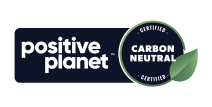Duplicate content is content that appears online in multiple places. If search engines can find identical, or very similar, pages across different URLs, they will mark them as duplicates.
Brands may not realise their site has duplicate content issues – or they may not believe it’s a problem.
However, it can be difficult for search engines to decide which version of the content is most relevant to a given search query, so leaving duplicate issues unchecked can negatively impact search rankings.
Here, we share 5 scenarios where duplication can occur, and the best fixes.
1. Issue: Duplicate product categories
This issue primarily applies to ecommerce sites, where the site structure comprises a number of products, many of which could be assigned to multiple categories.
If the site structure organises products by category, but a product has been tagged with a number of them, then a unique URL may be generated for each navigation path.
For example, an ecommerce site may sell tech and have the categories of Smartphones, Tablets and Laptops. If a new phone – let’s call it Phone X – came on the market, which could be used as both a smartphone and a tablet, the site administrator may tag it under both categories.
The following situation would occur –
- Phone X appears under the URL structure: https://www.techsite.com/smartphones/phone-x
- Phone X also appears under the URL structure: https://www.techsite.com/tablets/phone-x
This causes a content duplication issue, as even though the page is the same, search engines may treat the two URLs as separate pages which have been duplicated.
Fix: Rethink categorisation or utilise canonical tags
One fix could be to remove categorisation from your URLs, keeping the tags internally for organisation but not reflecting them in the URL structure. By having a single unique page for each product, you bypass the issue of multiple URLs being created depending on the user navigation path.
Another fix could be to apply a master category to your product. For example, if Phone X is mainly a smartphone, you could give it the master category of Smartphones, with the sub-category of Tablets. You will then ensure the URL only reflects the master category regardless of navigation path, resolving the duplication issue.
However, the fix which is arguably the most effective is utilising canonical tags on product pages. You will need to decide which page is the main one for indexing purposes – this is called the canonical.
Then, all versions of the page will need to have canonical tags implemented, which inform search engines which URL is the preferred version when multiple URLs with similar content exist.
For example, if the URL assigning Phone X to the Smartphones category was the canonical, both pages would have the following canonical tag added:
<link rel=”canonical” href=”https://www.techsite.com/smartphones/phone-x” />
2. Issue: Trailing slash
It may seem insignificant, but there is a difference between the two URLS below:
The difference is in the trailing slash. In the past, it has been customary for URLs with a trailing slash to signify a directory, while URLs without a trailing slash are typically used to represent a file.
However, this isn’t a hard and fast rule, and Google will treat the two URLs above as two separate, equal destinations. This is a problem in the context of content duplication.
The two main problems you’ll encounter are with crawl efficiency and link equity. If you are causing Google to crawl multiple versions of the same page, it makes the crawling process more complex.
If someone wants to link back to your page, but two versions can be rendered, they will either pick the trailing slash or non-trailing slash version. Your link equity is essentially being reduced by 50% because you have no canonical in place.
Fix: 301 redirect to canonical
You want to ensure that only one version of each page can load, so select the version you want as your canonical.
There is debate in the SEO community about whether the trailing slash is the preferred option – those who prefer it say that it instructs search engines to look for a directory instead of searching for a file, and this could result in faster loading times. However, there is no confirmed answer.
Once you have your canonical, ensure the variations redirect to this page. 301 redirects will ensure that variations will be rerouted to the canonical and pass along all link equity and page authority.
3. Issue: HTTP/HTTPS/WWW/non-WWW
If your site homepage loads up with all of the below URLs, and those URLs do not change, then you have a problem.
This is because Google will conclude that your site has four versions of the same page, and it will treat them all as duplicate content.
Unlike our issue with duplicate product categories, we do not want to retain all of these variations as working URLs. Therefore, we need to choose a canonical and implement a fix.
Fix: 301 redirect to canonical
You want to ensure that only one version of your page can load, and it’s advisable that you pick a secure version. Using https in your URL eliminates the chance of Google demoting your site for not being secure.
Using the www is optional, as it was originally used to indicate that the address would send the user to a public site. However, now it is optional and sSome even say it is now completely redundant.
Once you’ve chosen your canonical, implement your 301 redirect for these variations.
4. Issue: URL parameters
A particular problem for ecommerce sites, search engines can register duplicate content for varying query strings that result in different URL structures for the same page.
As an example, you may be browsing a shoe store and decide to click on a particular product page for a pair of running trainers. Your URL would look something like this:
https://shoestore.com/shoes/womens/running-trainers/
You may then decide to look at the pink pair of these running trainers, in a size 6. Your URL could change to this:
https://shoestore.com/shoes/womens/running-trainers?swatch=03&size=0200/
If search engines treat the two URLs as separate pages, they will conclude that they are duplicates. This can dilute the SEO authority of the page.
Fix: Add canonical tags
As a single product could have several colour, size and style variations, it’s important to instruct search engines that all of the URL structures should not be treated equally. This is where you add canonical tags to all of your pages. For example:
<link rel=”canonical” href=”https://shoestore.com/shoes/womens/running-trainers/” />
You could also insert a hash sign into the URL before the parameter, so that the search engine only indexes the canonical part of the URL.
5. Issue: Inconsistent internal linking
As you browse your site, you may find that some of your internal links don’t direct to the canonical URL. If you don’t notice yourself, Google Search Console will identify it in the indexing error report.
This issue can arise if you have chosen a canonical and applied canonical tags after using a variation of the URL within your internal linking strategy.
If you leave this issue unchecked, you will be wasting your crawl budget, as search engines will have to work harder to index your site and parse the canonicals after processing pages with inconsistent internal linking.
You want the canonical to be in your internal links, as alternative versions are not indexed and canonical tags don’t pass a ranking boost to your original article.
Fix: Internal link audit
Performing an internal link audit is recommended to stay on top of broken links and distribute link equity to boost performance, but they are also important if you have noticed your canonical pages aren’t being used in internal links.
Carrying out this process will allow you to reduce crawling issues and ensure link equity can be passed on.
Need help with duplicate content?
If you’ve realised your site is producing duplicate content and you need to get it fixed ASAP, then get in touch and we will be happy to help.
We can also check for these issues – and many more – with our Free Acquisitions Workshop. You’ll be equipped with knowledge about your site’s current position in the search market, and we’ll give you actionable insights, a personalised action plan, and tools you can implement right away.












